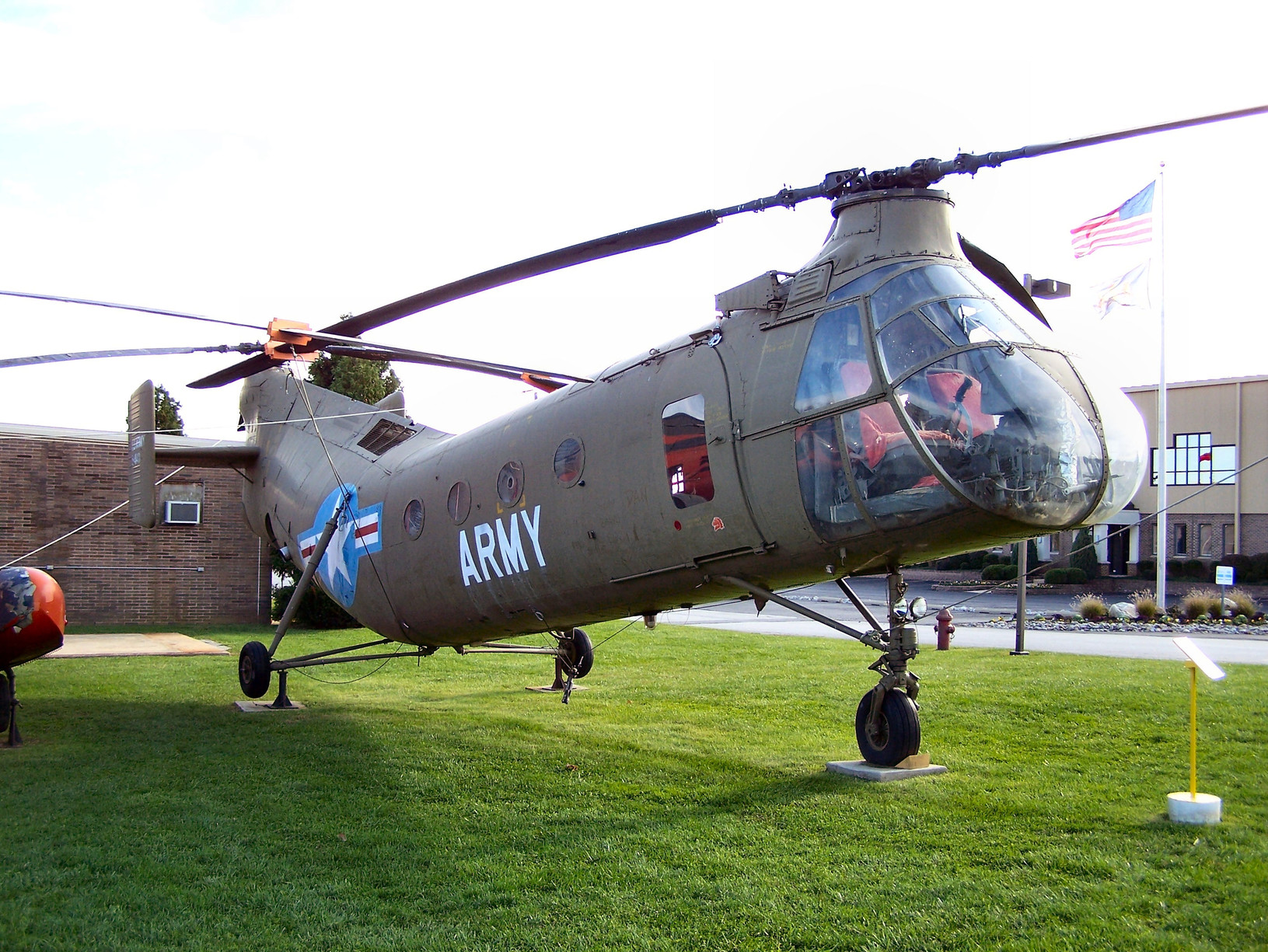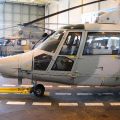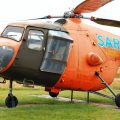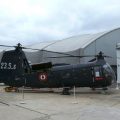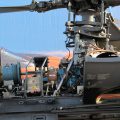Lla Piasecki H-21 Cheval de bataille/Shawnee est un hélicoptère américain, le quatrième d’une gamme d’hélicoptères à rotor tandem conçus et construits par Piasecki Helicopter (plus tard Boeing Vertol). Communément appelé « la banane volante », it was a multi-mission helicopter, utilizing wheels, skis, or floats.
The H-21 was originally developed by Piasecki as an Arctic rescue helicopter. The H-21 had winterization features permitting operation at temperatures as low as −65 °F (−54 °C), and could be routinely maintained in severe cold weather environments.
Source: Piasecki HU-21 sur Wiki
...
Plus d’infos:
Le Piasecki HU-2 était une variante du Piasecki HUP Retriever, un hélicoptère utilitaire compact avec deux rotors en tandem superposés. Le HU-2 a été conçu pour l’US Navy afin d’effectuer des missions de sauvetage et de transport à partir de navires et de porte-avions. Le HU-2 était propulsé par un seul moteur en étoile Continental R-975 et pouvait transporter jusqu’à quatre passagers ou deux civières. Le HU-2 était également équipé d’un pilote automatique et d’un treuil qui pouvait abaisser une élingue de sauvetage à travers une porte de la cabine. Le HU-2 a été l’un des premiers hélicoptères à effectuer une boucle, bien que ce ne soit pas intentionnel. Le HU-2 a été produit de 1949 à 1954 et a ensuite été remplacé par le Sikorsky H-34.
